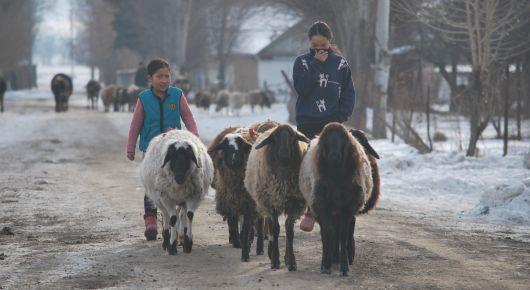Central Asia and global partners discuss the future of animal health and One Health in the region

Regional animal health networks offer a framework for building strong technical capacity, competency, leadership, and a critical mass of regionally networked specialists. With this in mind, a two-day workshop of the Central Asia Animal Health Network (CAAHN) took place in Nur Sultan on 8–9 December, bringing together not just chief veterinary officers and epidemiology and laboratory focal points from Central Asian countries, but also specialists from all major international players in the region.
The workshop offered an excellent opportunity for countries and participating international agencies to map and discuss main activities, initiatives, and priorities related to animal health and One Health in Central Asia. The CAAHN Action Plan was revised and updated and issues were discussed concerning training and data sharing needs, as well as the sustainability of the Network.
Workshop participants agreed to explore further options for ensuring CAAHN's sustainability based on discussions held and lessons learnt from regional animal health networks. Another major step, considering the focus on One Health issues, was for the World Health Organization (WHO) to join CAAHN as a permanent member and include national public health agencies through a network of focal points. Workshop participants also decided that FAO will lead the development of a regional training plan, matching countries’ needs with existing and upcoming capacity-building programmes offered by agencies.
CAAHN was originally established two years ago in Tashkent by FAO, jointly with the World Organisation for Animal Health (OIE) and the five Central Asian countries (Kazakhstan, Kyrgyzstan, Tajikistan, Turkmenistan, and Uzbekistan). At that initial meeting, countries prioritized work on neglected zoonoses (diseases that can be transmitted from animals to humans), such as brucellosis, echinococcosis, anthrax, and tuberculosis, highlighting the need for a One Health approach.
Additional objectives of the Network aim to facilitate the exchange of information and experience, standardize procedures, harmonize policies in accordance with international standards, and identify and fulfill gaps, weaknesses, and priorities.
“Perhaps most importantly, the Central Asia Animal Health Network is meant to act as an umbrella to streamline, coordinate, and avoid the overlapping of initiatives and projects by international agencies and countries related to animal health and One Health in Central Asia,” highlighted Daniel Beltrán-Alcrudo, Technical Advisor on Animal Health.
Participants of the second annual workshop included the Asian Development Bank, Centers for Disease Control and Prevention (CDC), Defense Threat Reduction Agency (DTRA), U.S. Department of Agriculture, the European Commission for the Control of Foot-and-Mouth Disease (EuFMD), World Bank, and WHO.
Countries and international agencies will continue working on the objectives of the Action Plan and reconvene in one year.
21 December 2021, Nur Sultan, Kazakhstan
